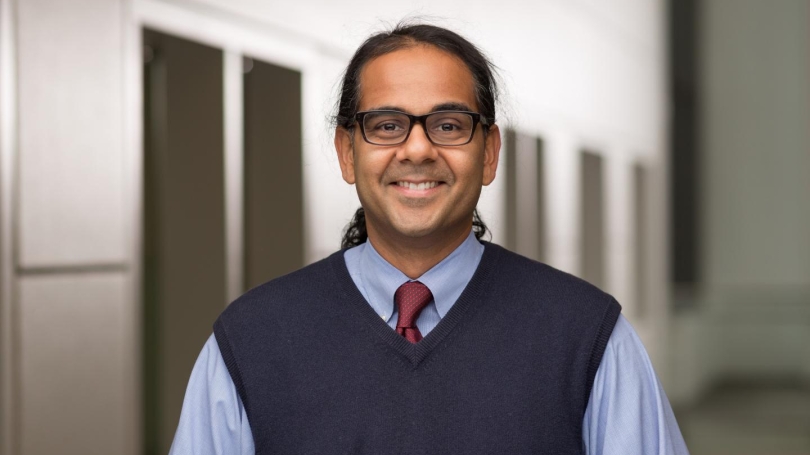"Through a longitudinal enchange between the museum and medical faculty, we have developed a novel approach in our use of artworks to connect humanity and curiosity to clinical problem solving."
MANISH K. MISHRA MD, MPH, Lecturer and Interim Director of Student Affairs and Director of Professional Education at the Dartmouth Institute for Health Policy and Clinical Practice at the Geisel School of Medicine at Dartmouth
If you were to ask Leonardo Da Vinci whether he was an artist or a scientist, he wouldn't understand the question. The assumption used to be that thoughtful practitioners in any discipline needed to draw upon a variety of intelligences. As we continue to incentivize specialized knowledge, different ways of knowing are seen as less relevant. In medicine, this separation leads to harmful outcomes that slowly whittle away at the delivery of compassionate care. The Hood Foundation Curator of Education, Neely McNulty, is uniquely skilled at holistically inviting students to make the critical connections between a visual art experience and the practice of medicine, and my students have long been the beneficiaries of this.
There has been a collaboration over the past decade with Hood Museum educators and first-year medical school faculty at the Geisel School of Medicine at Dartmouth. This work began as an exploration to see how medical students would respond to learning clinical and relational skills through guided techniques of close-looking in a museum. The initiative has since been refined and is now an anticipated, foundational framing for Dartmouth medical education introduced in the first week of medical school. The excitement of learning approaches to patient care from museum objects has carried over into experiences offered to pre-health undergraduate students at Dartmouth College through the Eichler '57 Fellowship for Healthcare Leaders.
Through a longitudinal exchange between the museum and medical faculty, we have developed, a novel approach in our use of artworks to connect humanity and curiosity to clinical problem solving. For great outcomes, both the physician and the artist must heighten their ability to notice. They need to attune their senses to every detail that is available and generate hypotheses to explain what they see in an act of curiosity and deep care for something beyond themselves. The skill required is to clear one's mind of distraction and receive the artwork as intended, with the openness to be affected. By bringing students to the museum, we promote the interaction of the observer and observed as a bidirectional exchange. The artwork makes the student feel a particular way internally, and in response the student reacts externally.
We could stop there and make the dyadic relationship be a method of internal survey—the metaphor would simply be the artwork is a surrogate for the patient. Like the artwork, the patient can change the way you feel, and the skillful pre-work prior to engaging either artwork or patient is to prepare by offering your full attention. However, we take this method of teaching a step further by thinking of this as a triadic relationship, not a dyadic one. If we shift the metaphor to include the artist, that is, the analogy becomes observer, art, artist: doctor, disease, patient. The inclusion of the artist in close-looking leads to the intentions of how the artwork is intended to be perceived and received. This is a critical piece to hold onto as a physician: there is a patient experiencing a disease state who is intentionally guiding your perception by giving their understanding.
It is the job of the holistic physician to keep the patient, their intentions, their signals, and their manner of presentation all at the forefront of the mind. Our collaboration with the Hood Museum introduces students to a different way of thinking that requires effort and can be practiced with intention outside of classical learning spaces. This comprehensive approach is critical to sustaining meaning and integrity in patient care, which is why we offer this orientation to the most junior members of our healthcare learning community—the first-year medical students and the pre-health Eichler '57 fellows. Our hope is that we set up our students with the practices for lifelong learning while they are with us. Giving a patient this heightened, holistic attention is a skill that requires a method, and perfecting it is the work of a lifetime.
